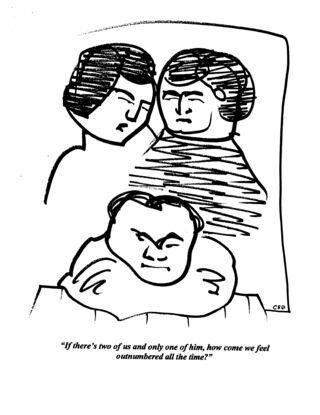

Just as it’s hard to marry well with the additional distractions and responsibilities of parenthood, it’s even harder to divorce well with children and adolescents. To do so, there are several competencies that can be helpful:
Consider one take on what these three might be.
Basic understandings
Although not as harshly formative as abandonment, abuse, neglect, debilitating illness, or the death of a parent, parental divorce is still highly impactful for children and adolescents. A watershed event, the family before and after the divorce are not the same.
As I suggested in my 1997 children’s book, The Case of the Scary Divorce, a core question for children of any age becomes: “What happens to my family now?” It's important for parents to understand:
In these and other possible ways, it’s important for parents to understand how their decision to divorce impacts children and adolescents. Sometimes, in the determination to move on with their lives, parents can feel frustrated with the child or adolescent whose adjustment and acceptance is taking time to catch up with this family change.
In general, it’s best to be patient and listen to youthful concerns.
Divorcing tasks
To un-marry as parents is complicated and hard to do well.
1. Partners must inform children — making sure that children are not blamed for this decision, there is no pressure to take parental sides, and children can ask questions. Unable to do so, unrealistic imaginings can rule.
2. Partners must separate sharing — who gets what and when, like custody, support, visitation, primary domicile, educational and health-care decision-making. If they are unable to do so, the relationship can remain opposed and contested.
3. Partners must emotionally reconcile — come to terms of emotional acceptance with whatever marital differences grew them apart. If they are unable to do so, the relationship can remain aggrieved, with children torn in between.
4. Partners must stabilize change — create two-household living arrangements and a familiar pattern and routines of family living that children can rely on. If they are unable to do so, life can feel confusing and chaotic.
5. Partners must re-commit as parents — share a joint concern, cooperation, and communication for the children’s welfare. If they are unable to do so, normal household differences and working together can become divisive.
THE BASICSDivorcing well with children and adolescents isn’t easy. Sometimes, individual or joint counseling can help the couple meet these objectives.
Single parenting skills
Next, there comes the Refiner’s Fire of in-role education where, through hard-won family experience, effective single parenting skills can be practiced. There are so many to choose from, but here are a few:
Sometimes, attending a local chapter meeting of Parents Without Partners can provide support and guidance when becoming a single parent and learning the complicated skill set that comes with this challenging family role.
In counseling over the years, some of the most effective family managers I have had the privilege to work with have been single parents. Counter to negative stereotypes about a single parent presiding over a broken home that produces troubled children, I have seen the reverse: strong adult leadership nurturing resilient children and responsible adolescents.
Finally, the divorce understandings, tasks, and single parenting skills described above are not meant to be comprehensive or obligatory. They are only suggestions from working with divorcing couples and single parents over the years. So take what you like, leave the rest, and do what works for you.